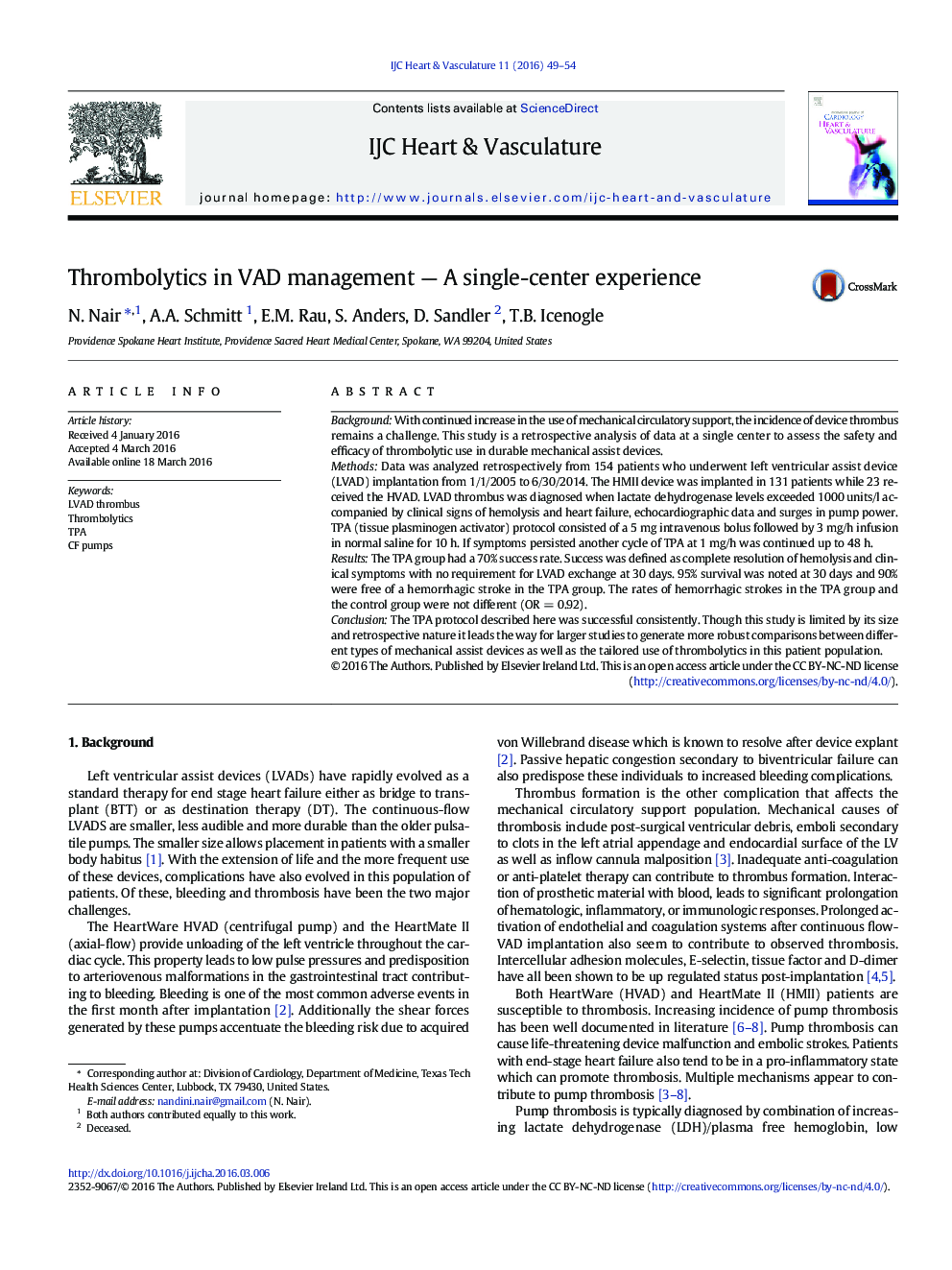| Article ID | Journal | Published Year | Pages | File Type |
|---|---|---|---|---|
| 2926932 | IJC Heart & Vasculature | 2016 | 6 Pages |
BackgroundWith continued increase in the use of mechanical circulatory support, the incidence of device thrombus remains a challenge. This study is a retrospective analysis of data at a single center to assess the safety and efficacy of thrombolytic use in durable mechanical assist devices.MethodsData was analyzed retrospectively from 154 patients who underwent left ventricular assist device (LVAD) implantation from 1/1/2005 to 6/30/2014. The HMII device was implanted in 131 patients while 23 received the HVAD. LVAD thrombus was diagnosed when lactate dehydrogenase levels exceeded 1000 units/l accompanied by clinical signs of hemolysis and heart failure, echocardiographic data and surges in pump power. TPA (tissue plasminogen activator) protocol consisted of a 5 mg intravenous bolus followed by 3 mg/h infusion in normal saline for 10 h. If symptoms persisted another cycle of TPA at 1 mg/h was continued up to 48 h.ResultsThe TPA group had a 70% success rate. Success was defined as complete resolution of hemolysis and clinical symptoms with no requirement for LVAD exchange at 30 days. 95% survival was noted at 30 days and 90% were free of a hemorrhagic stroke in the TPA group. The rates of hemorrhagic strokes in the TPA group and the control group were not different (OR = 0.92).ConclusionThe TPA protocol described here was successful consistently. Though this study is limited by its size and retrospective nature it leads the way for larger studies to generate more robust comparisons between different types of mechanical assist devices as well as the tailored use of thrombolytics in this patient population.
Graphical abstractFigure optionsDownload full-size imageDownload as PowerPoint slide
